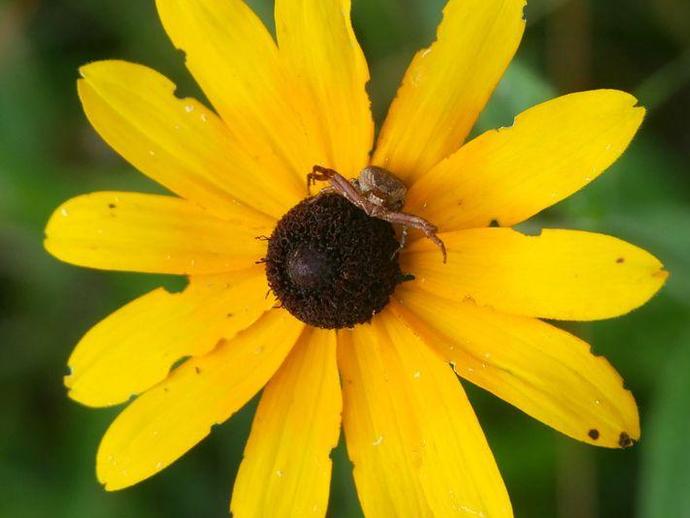September 12, 2021
We're reaching into the archives for today's #BenInNature update presented by our friends at Carter Bank & Trust! The following post was originally published on August 5, 2020.
This is a crab spider of the genus Misumena, also known as the "flower crab spiders." We looked at one of these spiders awhile back, but we didn't get to see it doing what it does best: lying quietly in wait...
This genus of spiders does something pretty clever: rather than going out on the hunt for delicious insects, they hide in flowers and let the insects come to them! When a pollinator lands on a flower -- in this case, a black-eyed Susan -- the spider springs into action, grabbing the insect and enjoying a tasty treat.
Some spiders in this genus can even change color to better match the color of the flower they're hiding on! Unlike a chameleon or an octopus, this is not a fast process, and it requires the spider to secrete a yellow pigment into the outer layer of cells on its body. It can take about two weeks or more for a white flower crab spider to turn yellow, and about a week for a yellow crab spider to turn white.
ABOUT #BenInNature
Social distancing can be difficult, but it presents a great opportunity to become reacquainted with nature. In this series of posts, Administrator of Science Ben Williams ventures outdoors to record a snapshot of the unique sights that can be found in the natural world. New updates are posted Monday - Friday, with previous posts highlighted on the weekends. This series of posts is made possible thanks to the support of VMNH Corporate Partner Carter Bank & Trust (www.cbtcares.com).
NATURE PHOTO IDENTIFICATIONS
If you discover something in nature that you would like help identifying, be sure to message us right here on Facebook with a picture (please include location and date of picture) and we'll have our experts help you identify it!

 Hours & Admissions
Hours & Admissions Directions
Directions

